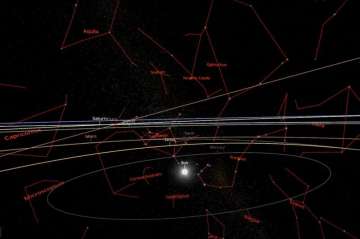An international team of over 100 astrophysicists created the most detailed 3D map of the universe, giving us a look back at its expansion history. It is the result of an analysis of more than four million galaxies and ultra-bright, energy-packed quasars. The efforts of hundreds of scientists from around 30 institutions worldwide have yielded a “complete story of the expansion of the universe”, AFP quoted Will Percival of the University of Waterloo in Ontario, Canada, as saying.
The map relies on the latest observations of the Sloan Digital Sky Survey (SDSS), titled the "extended Baryon Oscillation Spectroscopic Survey" (eBOSS), with data collected from an optical telescope in New Mexico over six years.
The infant Universe following the Big Bang is relatively well known through extensive theoretical models and observation of cosmic microwave background -- the electromagnetic radiation of the nascent cosmos.
The map documents the universe as early as when it was only 300,000 years old, revealing filaments, basically galaxy walls between the voids in the universe. Using this map, the scientists are able to measure patterns in the distribution of galaxies.
Studies of galaxies and distance measurements also contributed to a better understanding of the Universe's expansion over billions of years.
The map reveals that the expansion of the Universe began to accelerate at some point and has since continued to do so.
The researchers said this seems to be due to the presence of dark energy, an invisible element that fits into Albert Einstein's general theory of relativity but whose origin is not yet understood.
Astrophysicists have known for years that the Universe is expanding, but have been unable to measure the rate of expansion with precision.
According to AFP, Kyle Dawson of the University of Utah, who unveiled the map on Monday, said the researchers tackled a "troublesome gap in the middle 11 billion years". Through "five years of continuous observations, we have worked to fill in that gap, and we are using that information to provide some of the most substantial advances in cosmology in the last decade," he said.
